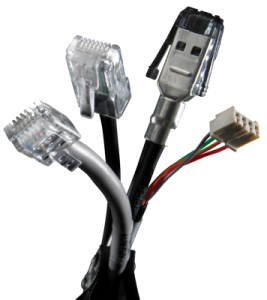There are many choices involved in choosing even something seemingly simple, like a cash drawer. Beyond some straightforward preferences such as color, there are several questions that should be asked to help select the drawer that is right for each specific application. In this blog, we will discuss the basic questions that help narrow the field to a few choices.
Basic Things to Consider When Choosing a Cash Drawer
The first question relates to the type of store. Will the drawer be opened often, such as in a fast-food environment? Or will it be used less often, such as in a mall kiosk? Knowing the operational expectations will help determine if the drawer should be a heavy-duty or a standard-duty drawer.
Beyond this basic durability question, there are several more questions to ask. They include:
- How will the drawer be opened?
- What does your software require to open the drawer?
- How much room is available for the POS equipment at the checkout counter?
- How will the flow of customers and products relate to the location of the drawer?
- Should the drawer be mounted under the counter?
- Will the drawer need to have all of the other POS devices located on top of it?
- Should the cables be hidden from view?
Understanding Your POS System Compatibility
Believe it or not, there are many ways to connect a cash drawer to your POS system. The 1st thing to pay attention to is the options your POS software package has for opening a drawer. Some can only open a drawer one way; others have a wide range of choices.
Common Cash Drawer Connection Methods
Some of the common cash drawer connection methods include:
Connecting Through the Receipt Printer

The lowest cost and the most common way of connecting the drawer is through the receipt printer. All of the receipt printers in today’s market have a cash drawer driver port. Since the printer already has the electronics, this is the easiest and cheapest way to connect a drawer. Most of the printers do use an RJ11 (telephone style) connector to connect to the drawer. However, you must be sure you are using the correct cable from the drawer to the printer since not every printer uses the same pin-out for the connector. Using the wrong cable could cause damage to the printer’s cash drawer drive circuit. Checkout our Connectivity Guide to find the correct cable for your system.
Serial Port Connection
A serial connection is also a choice you might find as part of your software. This used to be a popular choice but the USB port is quickly taking over. Many PC’s don’t even include a serial port anymore.
USB Interface Connection
If a receipt printer is not part of your system, the next most likely way of connecting is with a USB interface. This drawer comes with everything you need to connect to your PC into a standard USB port. Drivers are provided with the drawer and there is a process for loading them to have the software recognize the drawer is there.
Parallel Port Interface
This is even truer for the parallel port interface which is another interface choice available to you. While it may still be an option, it is the least popular way to connect a cash drawer.
Key Considerations Before Choosing Your Cash Drawer
There are also retail environments that simply don’t need a cash drawer interface at all. In these situations, a manual drawer is the ideal choice. There is no cable, interface board or even a solenoid in these drawers. Instead, it is opened with a push button on the drawer front.
Finally, APG has just released a drawer that can be connected to an Ethernet port. This drawer is the ideal choice for a thin client system. It also has the advantage of carrying with it all of the drawer statistics such as how many times it has been opened as well time stamping of every operation. If you would like to learn more, please click here.
Keep on eye on this blog for the next installment of this series when we will be looking at, “How much room is available for the POS equipment at the checkout counter?” In the mean time, if you have questions that you would like to have addressed, feel free to contact us and will be happy to answer your question(s).


